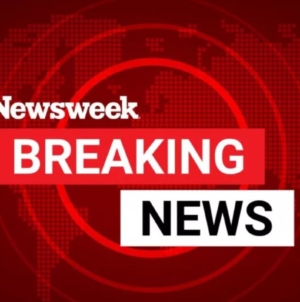-
Multiple Casualties Reported after Car Drives into Crowd in St Louis - 33 mins ago
-
China Hits Back at US Over Nuclear Weapons Alarm - about 1 hour ago
-
Honda and Nissan Unveil Merger Talks as Global Competition Bears Down - about 1 hour ago
-
Donald Trump Taunts Panama: ‘Welcome To The United States Canal’ - 2 hours ago
-
Mets Sign Free Agent Pitcher Sean Manaea to $75 Million Contract: Reports - 2 hours ago
-
‘I Was Destroyed by It’: 4 Men on Abuse at Ireland’s Catholic Schools - 3 hours ago
-
Week 16 Sees Raiders Play Way Out Of Landing Top QB In NFL Draft - 3 hours ago
-
Former WWE Champion Addresses Potential Royal Rumble Return - 3 hours ago
-
Trump and Biden, Make the Hostages Your Priority - 4 hours ago
-
Costco Guys More Popular Than Roman Reigns, Says Former AEW Superstar - 4 hours ago
Map Reveals US States Where Healthcare Is Least Accessible
Affordable healthcare is essential for public health and equality. However, access varies widely across the nation.
The U.S. is the only wealthy country in the world without a developed universal healthcare system. But some states are worse than others when it comes to accessing affordable healthcare, as Newsweek has revealed in the map below.
“Accessing affordable healthcare is a challenge for many Americans nationwide,” Zoi Galarraga, Senior Digital PR Manager at Forbes Advisor, the group who led the study, told Newsweek.
“A recent survey from Gallup and West Health found that just 55 percent of U.S. adults can access and afford quality healthcare when needed.
“Additionally, over 100 million Americans—nearly one third of the nation— do not have access to a usual source of primary care, according to the National Association Of Community Health Centers.”
To explore these disparities, Forbes Advisor compared the 50 U.S. states across 14 key health metrics, including the relative numbers of hospital beds, doctors, nurses, community health centers, and percentage of residents who lack health insurance. Each state was given a score based on these metrics.
“Our most heavily weighted metrics examine barriers to accessing primary care, such as the number of hospital beds per 1,000 residents and the number of primary care physicians, specialist physicians, nurse practitioners and physician assistants per 10,000 residents,” Galarraga said.
The results can be seen in the map below:
Following this analysis, the following ten states were revealed as having the least accessible healthcare in the U.S.:
Which metrics were considered in the analysis?
- Number of hospital beds per 1,000 residents
- Number of primary care physicians per 10,000 residents
- Number of specialist physicians per 10,000 residents
- Number of nurse practitioners per 10,000 residents
- Number of physician assistants per 10,000 residents
- Percentage of need met in primary care provider shortage areas
- Percentage of residents who lack health insurance coverage
- Number of community health centers per 100,000 residents
- Average annual premium for employees with single coverage through employer-provided health insurance
- Percentage of annual health insurance premium covered by employers for employees with single coverage
- Average annual deductible for employees with single coverage through employer-provided health insurance
- Percentage of residents who chose not to see a doctor at some point in the past 12 months due to cost
- Number of critical care physicians per 10,000 adults
- Number of critical care nurses and CRNAs per 10,000 adults
- Utah
- Nevada
- Texas
- Arizona
- Georgia
- South Carolina
- Indiana
- Wyoming
- Idaho
- North Carolina
So, what drives these disparities? “In some states, accessing healthcare may be more challenging due to high costs, a lack of health insurance coverage and a shortage of healthcare providers,” Galarraga said. “This report sheds light on the states that face the greatest barriers to accessing healthcare.”

Paulbr/Getty
Utah tops this list due to its lack of resources, including qualified healthcare professionals and hospital beds. Utah employers also cover the second-lowest percentage of employee’s annual health insurance premiums.
Nevada, at number two, has the lowest relative number of primary care physicians and Texas, at number three, has the highest percentage of residents lacking health insurance. It also has the highest percentage of residents who are unable to afford to visit the doctor.
Galarraga added that they were not surprised to see five Western states rank among the top 10 states where healthcare is least accessible due to previous findings in the 2023 Forbes Advisor report uncovering the best (and worst) states for healthcare.
So, what needs to be done to level out these healthcare disparities? “According to The Department of Health and Human Services, digital solutions such as telehealth can improve access to primary care by reducing barriers related to transportation and expanding the ability to offer services in languages other than English,” Galarraga said.
“Having the best health insurance can also increase access to and reduce the cost of essential healthcare. Uninsured adults are less likely than those with health coverage to receive preventive and screening services on a timely basis and are less likely to have a primary healthcare provider.”
Do you have a tip on a health story that Newsweek should be covering? Let us know via science@newsweek.com.
Source link




















